The 1st of July 1979 is in everyone's memory for the epic duel between Gilles Villeneuve and René Arnoux at the Formula 1 French Grand Prix. The Canadian's Ferrari and the French's Renault met several times during an anthology lap which still beats records for views today.
However, further ahead was about to make history in Formula 1. Jean-Pierre Jabouille led the race held in Dijon, at the wheel of the other Renault RS10 : a French single-seater, with a French engine, French tires and piloted by a Frenchman was about to win the French GP. It couldn't be more perfect than this, right? Could…
A perfect day
It was also the first time that a Turbo engine would win a GP, against the army of opponents who for two years had been joking about the reliability of Renault Turbo engines in F1.
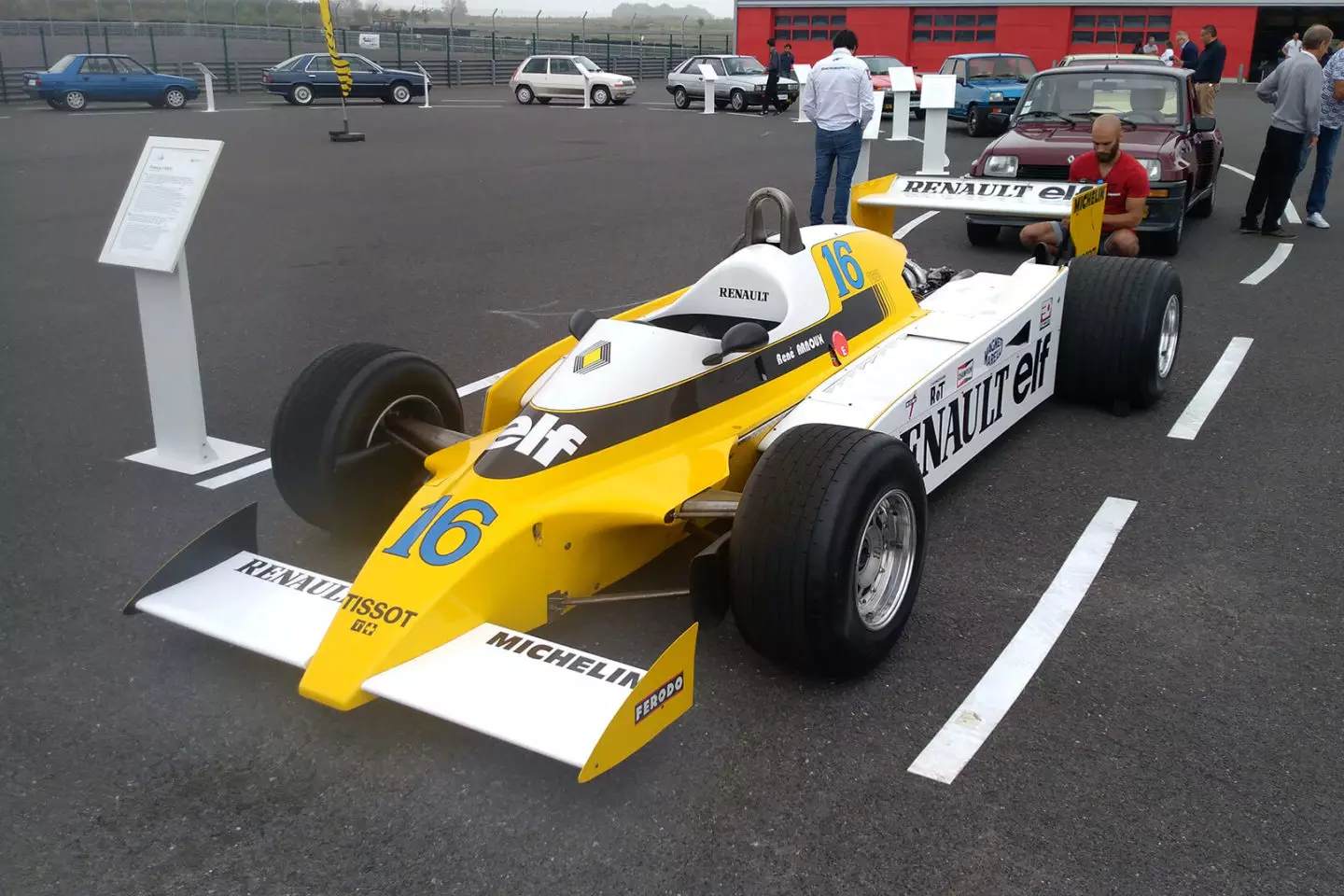
Renault RS10
Jabouille really won and shut up everyone's mouths. It was the beginning of a new era in F1. Quickly all the other teams realized that they had to turn to supercharging if they didn't want to be crushed by Renault.
Renault Classic made the party
Forty years later, Renault decides to celebrate this historic achievement. The first celebration took place on a lap of honor before the recent French GP at the Paul Ricard circuit, which once again brought Jabouille and the RS10 together. But the private party was saved for a much more discreet location, the Ferte Gaucher circuit, a runway designed on an airfield, which is an hour east of Paris.Renault Classic filled several trucks with some of its museum's most iconic Turbo-engined cars and brought them to this location. Then he invited some journalists to enjoy a unique day. Guests of honor at this event were Jabouille and Jean Ragnotti, the iconic rally driver for the French brand. The rest were cars, competition and road cars. But there we go.
RS10 and Jabouille back
Jabouille put his helmet and suit back on — brand new material, but decorated like his equipment from forty years ago — and installed himself in the RS 10. The mechanics put the V6 Turbo in gear and the former pilot made it track, for some celebration laps. More than the speed, which was not present, it was the emotion of the moment that prevailed, to the shrill sound of the yellow car's exhausts, immaculately restored.
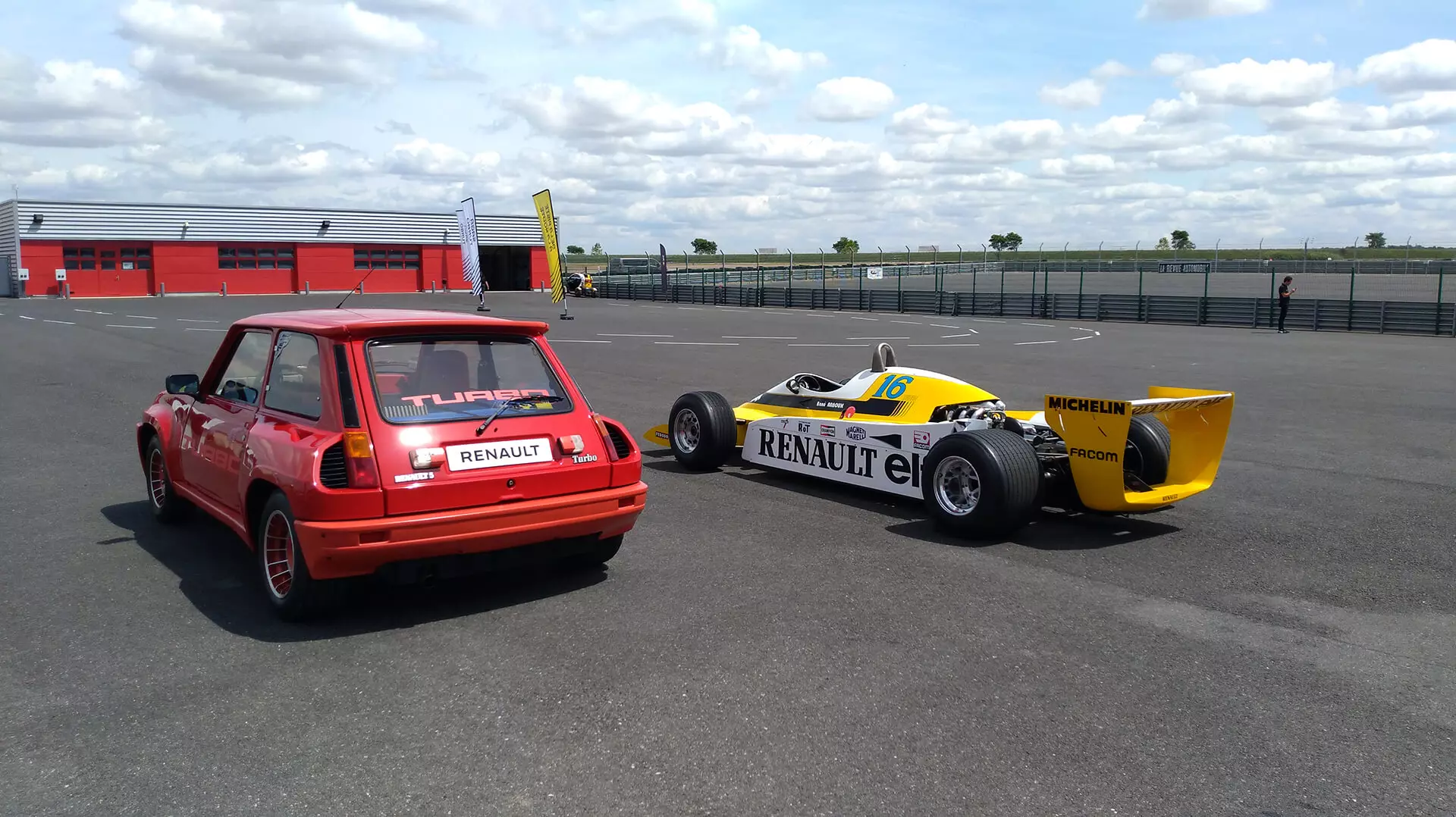
The veteran pilot showed his well-known professionalism, did his “job”, posed for the photographs at the end and dropped a few phrases of circumstance, after an spontaneous round of applause from those present. “It's a pleasure to do this, maybe now back in the 100 years…” he joked. More seriously, he did not fail to mention that “it is still a very tough car to drive, I didn't know the circuit… but it's another page to turn. The sky is beautiful, the sun is shining and that's what matters,” he concluded in his well-known mercurial tone.
Ragnotti: do you remember him?…
Jean Ragnotti wrote many pages of the Renault Turbo saga, especially on rallies, and did not hesitate to talk a little about his historical connection with the diamond brand. Here is our conversation:
Car Ratio (RA): What memories do you have of the rally in Portugal, where you lined up with the R5 Turbo, 11 Turbo and Clio?
Jean Ragnotti (JR): A very tough rally, with a lot of people and a lot of enthusiasm. I remember the big fight with the front-wheel-drive 11 Turbo against the all-wheel-drive Lancia Deltas. It was a big battle in 1987, the 11 Turbo was lighter, very effective and I almost won.
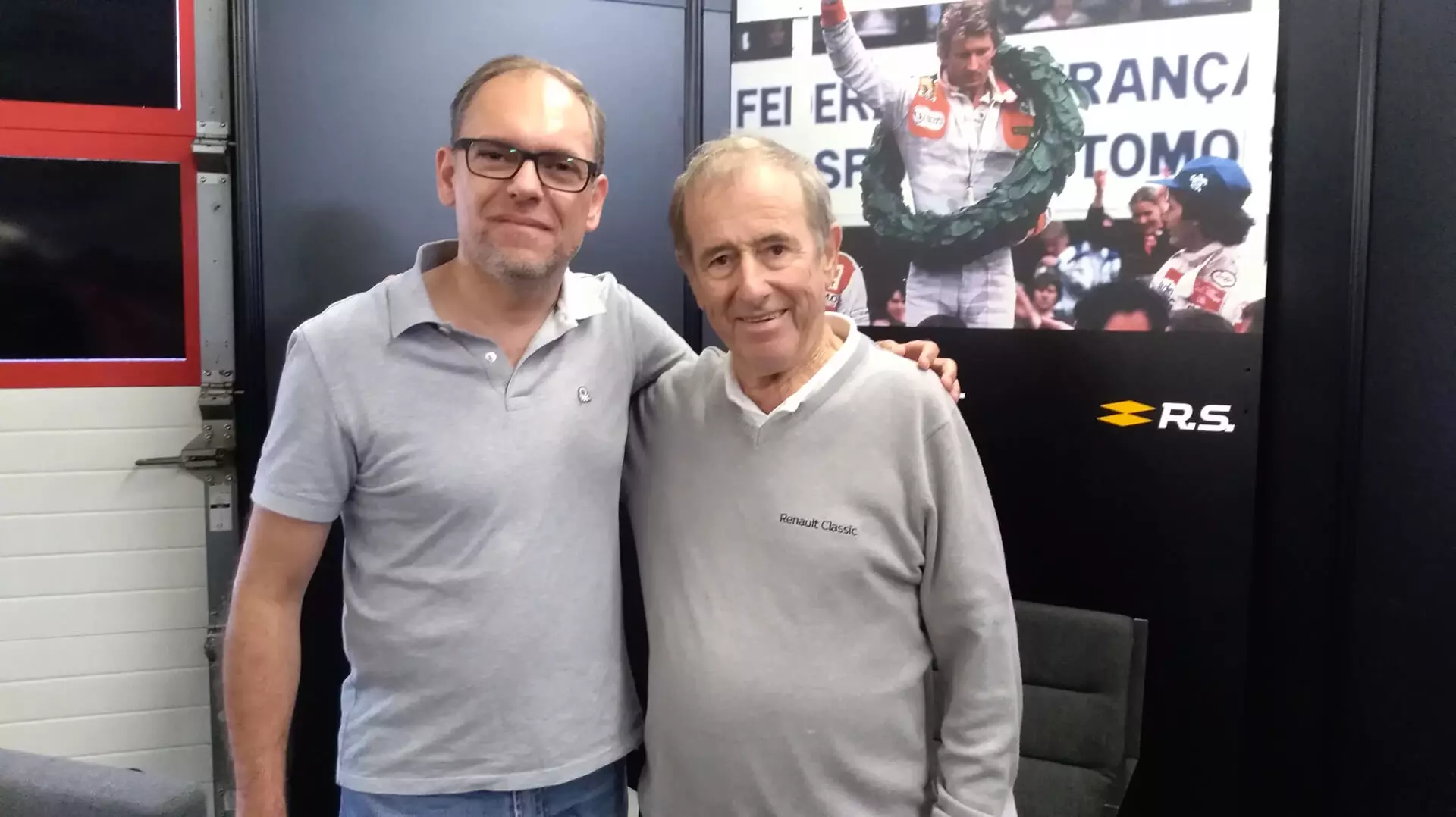
RA: And the first steps with the Renault 5 Turbo, how were they?
JR: In 1981 we won the Monte Carlo right away, but the engine had a lot of delay in its response, it was very violent and I did a lot of spins in the snow, on the hooks. In 1982, we lowered the power a bit and the car was much easier to steer from then on. Only with Maxi from Grupo B, in 1985, things became more delicate again. Especially in the rain, I did a lot of aquaplaning. But I was the fastest on the asphalt, it was a great pleasure to guide him in Corsica, where I won.
Subscribe to our newsletter
RA: And what were your favorite cars during your career?
JR: For starters, the R8 Gordini, a real racing school; then the R5 Turbo, in the 82 to 85 versions, and also the Group A Clio. The Clio was an easier car to drive, easier to show off. With Maxi, I had to be more focused…
RA: How do you compare the rallies of your height with those of today?
JR: The rallies were longer, three times longer than today. Today the schedules are for civil servants, everything is much easier.
RA: And have you ever had the opportunity to drive one of the new WRC cars?
JR: I didn't. I know that if I asked Renault, they would let me, but I have always been faithful to the brand. But they tell me they are easier to guide than the old ones. And that old-timers like me would have no difficulty moving fast.
RA: Your entire career has been at Renault, why have you never left for another brand?
JR: Peugeot invited me, but Renault let me race in several categories. My goal was not to be world champion, it was to have fun and amuse the audience. I did Le Mans seven times, raced in supertourisms and tested with Renault Formula 1s, as well as rallies. And that yes, it gave me pleasure, that's why I never wanted to go out.
Bad luck on co-drives
After the conversation, it was time for action, first in “co-drives” alongside former Renault drivers. The first was in a 1981 Europa Cup R5 Turbo , the first single-brand trophy with turbocharged models, which used series cars, in races held in some GP programs and where professional and amateur drivers lined up.
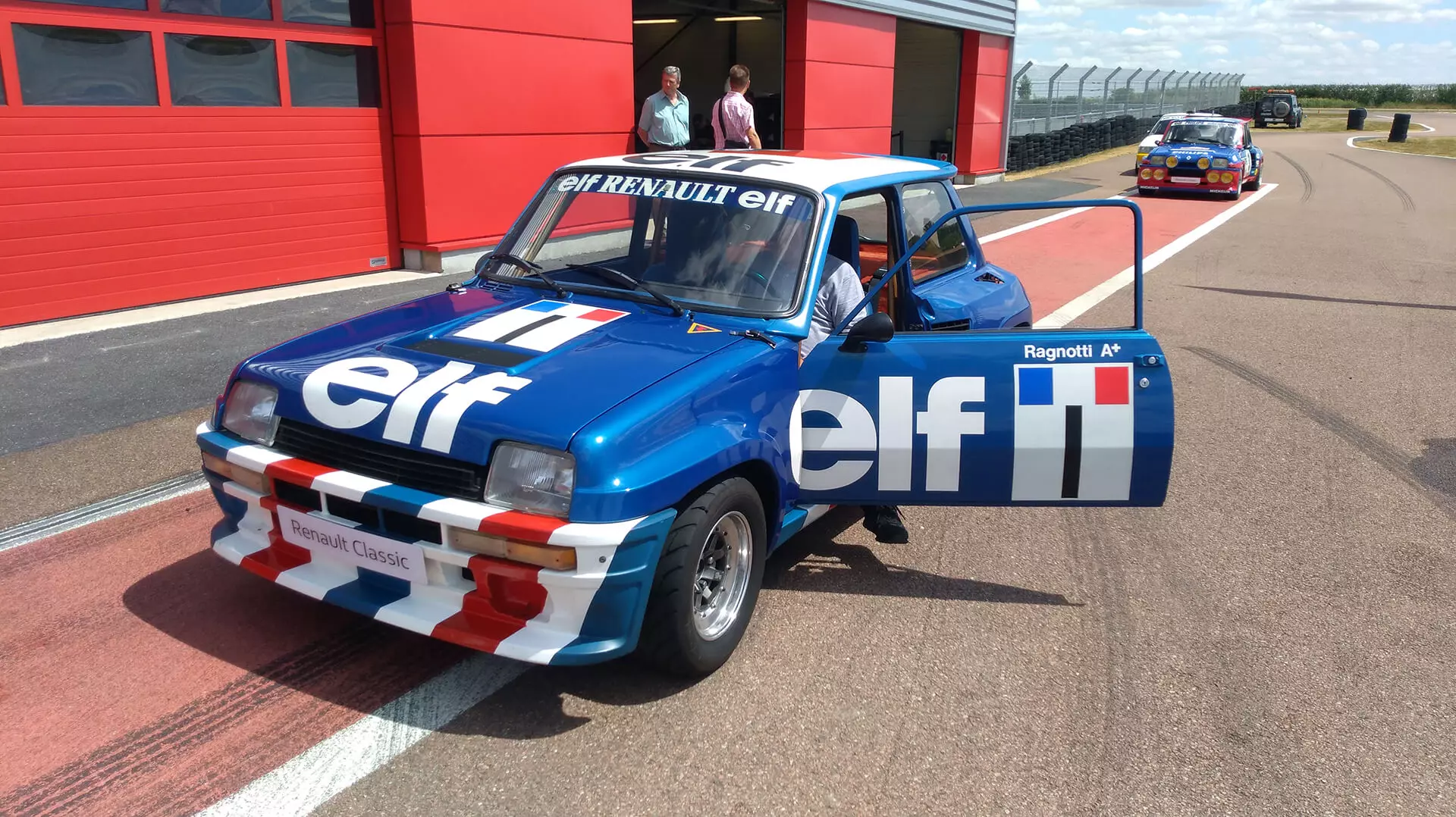
The 165 hp of power was not what impressed the most, but the way of driving the R5 Turbo, with relatively slow entries in corners and then settling the car in the rear, making use of the central engine to get the best traction, in a discreet drift but held up from the rear, especially on medium corners. A very classic way to ride, but still very fast.
Then it would be time to move on to a R5 Turbo Tour de Corse , the most developed version for rallying of the original model, already with 285 hp, in the version sold to private teams. However, luck was not on our side. The driver on duty, Alain Serpaggi, went off the track, hit the tire protections with some violence and the white and green car became inoperable.
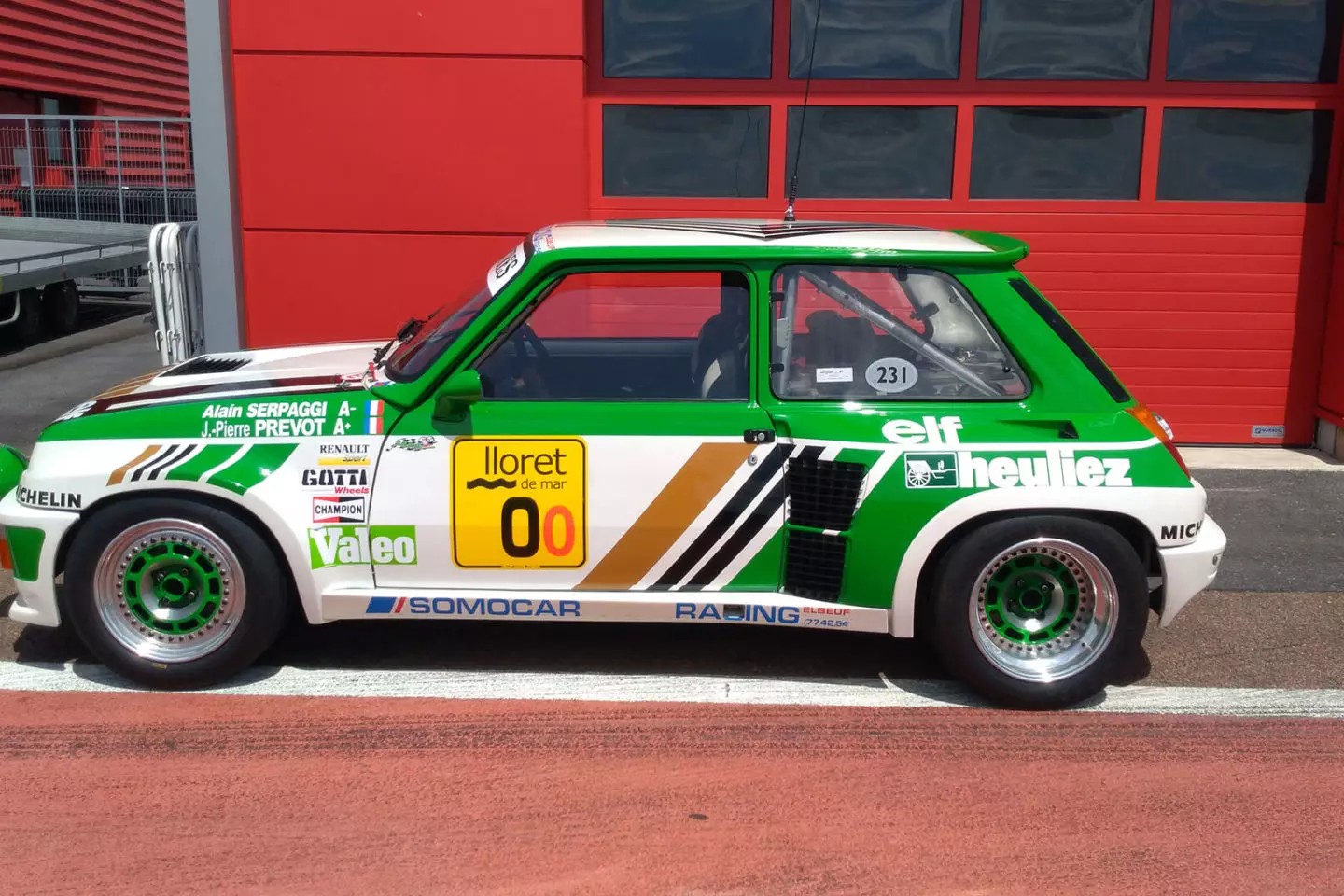
Renault 5 Turbo Tour de Corse. The before…
The possibility of co-drive in the R5 Maxi Turbo , which was also ready — the maximum exponent of the R5 Turbo, with 350 hp. But already inside the cabin of this group B monster, a mechanic appeared running, saying that the special gasoline for his engine had run out. Another possibility would have been to ride alongside in a rally R11 Turbo, but for this one, there were no more tyres. Anyway, it's for the next…
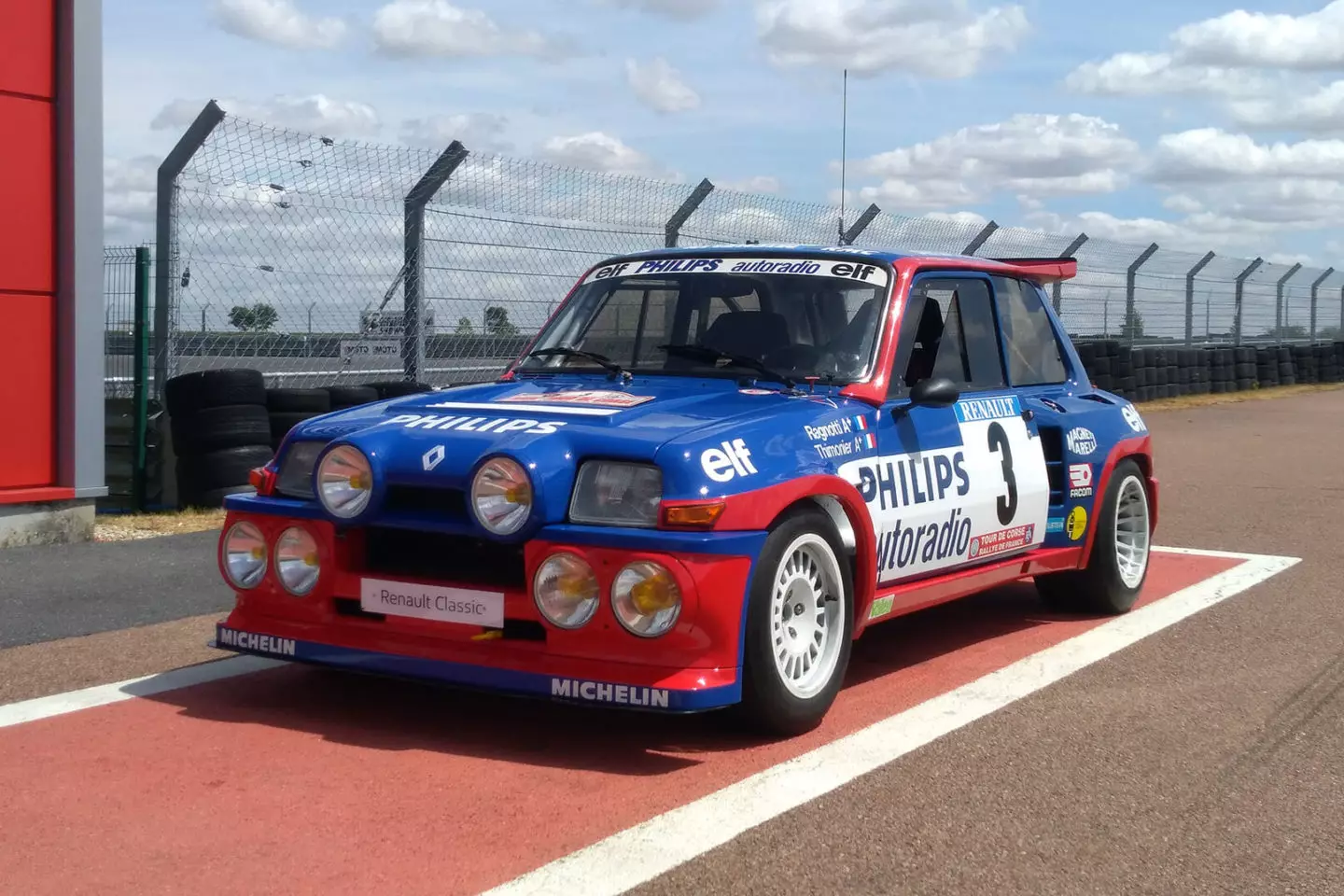
Renault 5 Maxi Turbo
play classics
For the other half of the day, a meeting was scheduled with some of the classics with a Turbo engine that made history at Renault. Cars that came from a collection of 700 cars, the brand's classics department and that impressed teenagers in the eighties and nineties. Cars like the R18, R9, R11, all in Turbo versions and also the bigger R21 and R25.
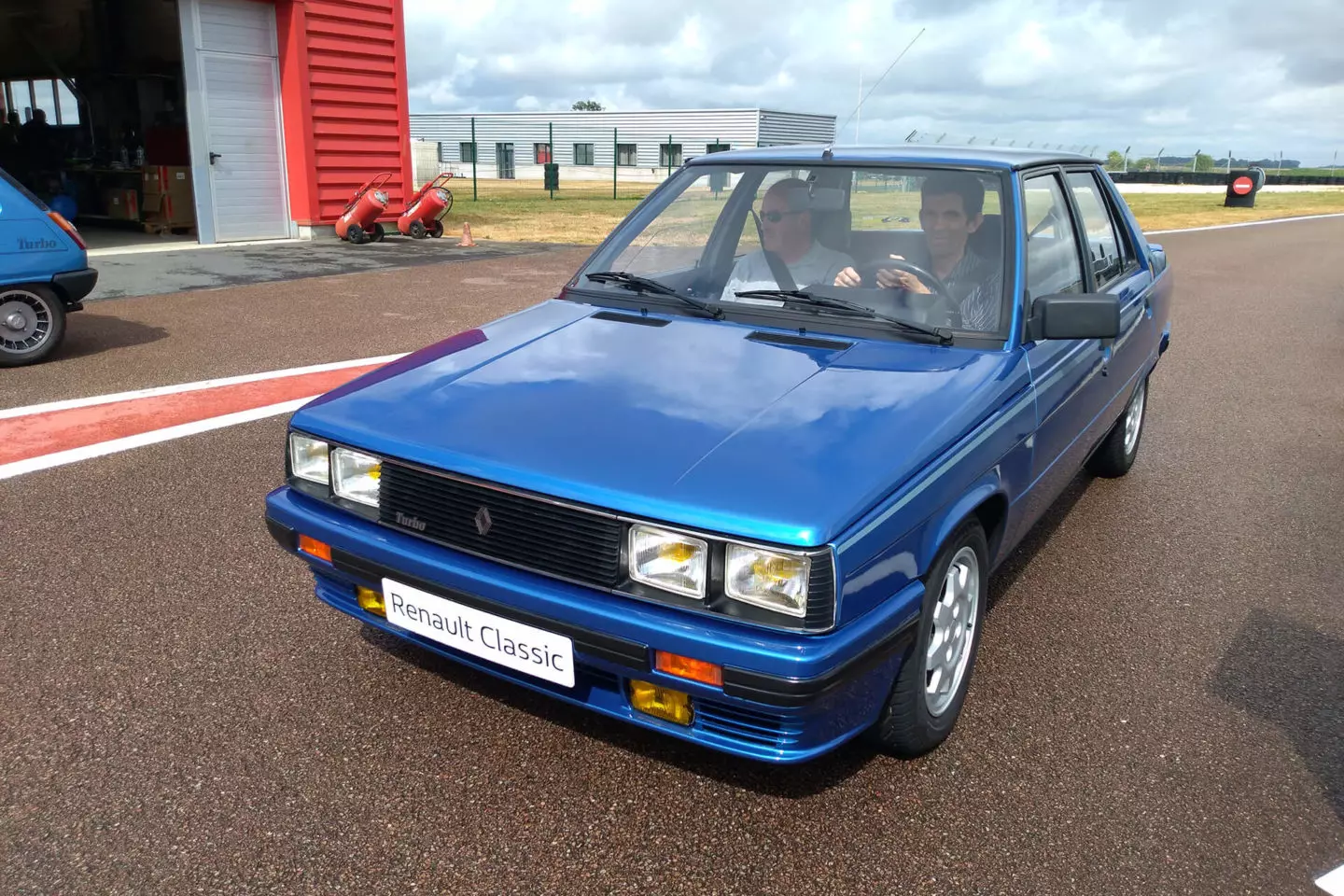
Renault 9 Turbo
As there was no time to guide everyone, we chose some of the most emblematic ones, starting with an immaculate 1983 Turbo Turbo , with its 132 hp 1.6 engine. A surprise, due to the smoothness and ease of driving, no great turbine response time, a good manual gearbox and steering that doesn't require much effort. At the time, Renault announced 200 km/h of top speed and 9.5s for the 0-100 km/h, for this coupé with the air of a Porsche 924.
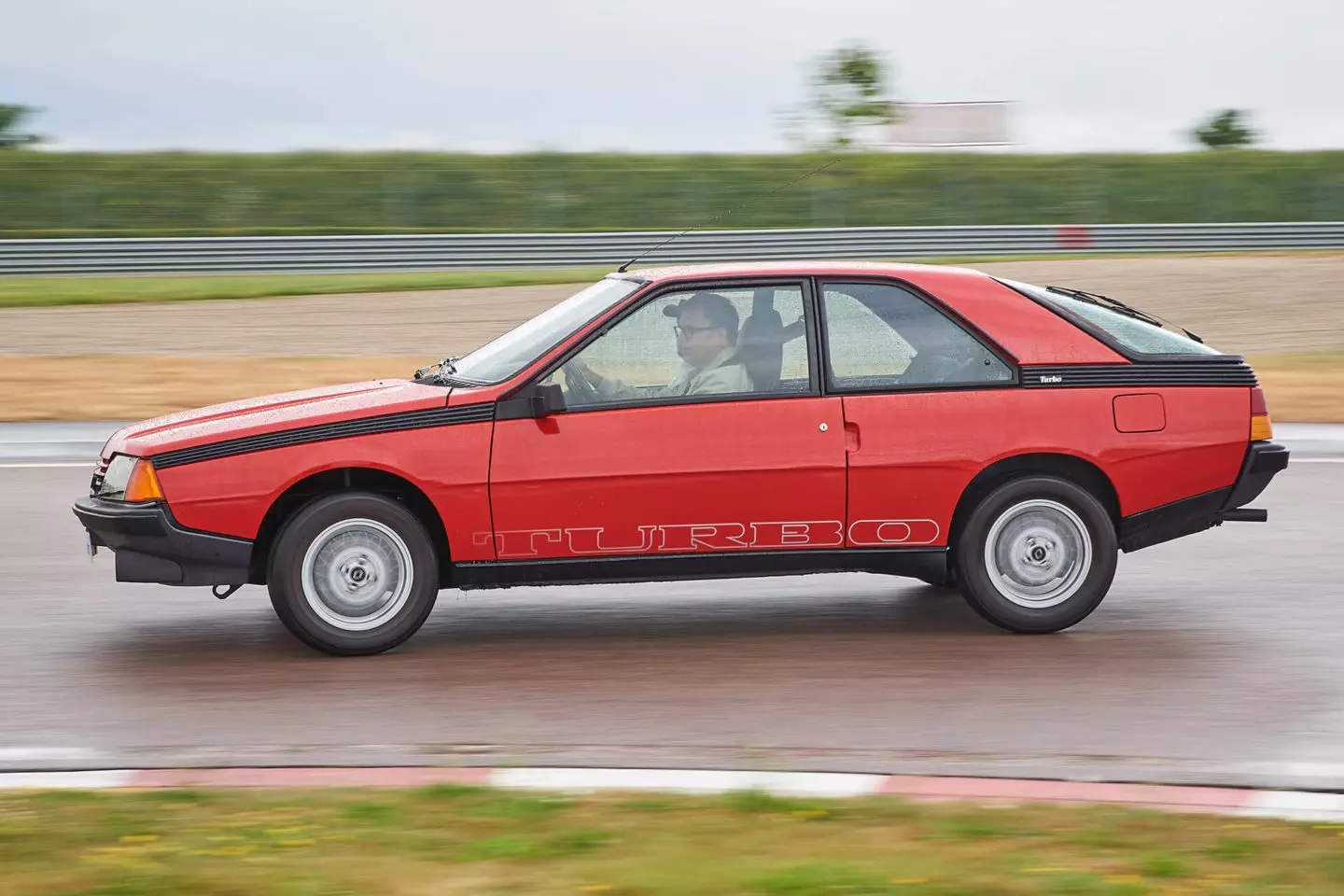
Renault Fuego Turbo
From R5 Alpine to Safrane
Then it was time to go back in time, to the 1981 R5 Alpine Turbo . Maybe the mechanics weren't as perfect as the Fuego's, but the truth is that this R5 seemed much older, with the 110 hp of its 1.4 engine not making the presence expected and with a heavy steering. The behavior also proved to be inaccurate and the traction, on the wet track, imperfect. Maybe it was the whims of the classics, who sometimes don't want to collaborate…
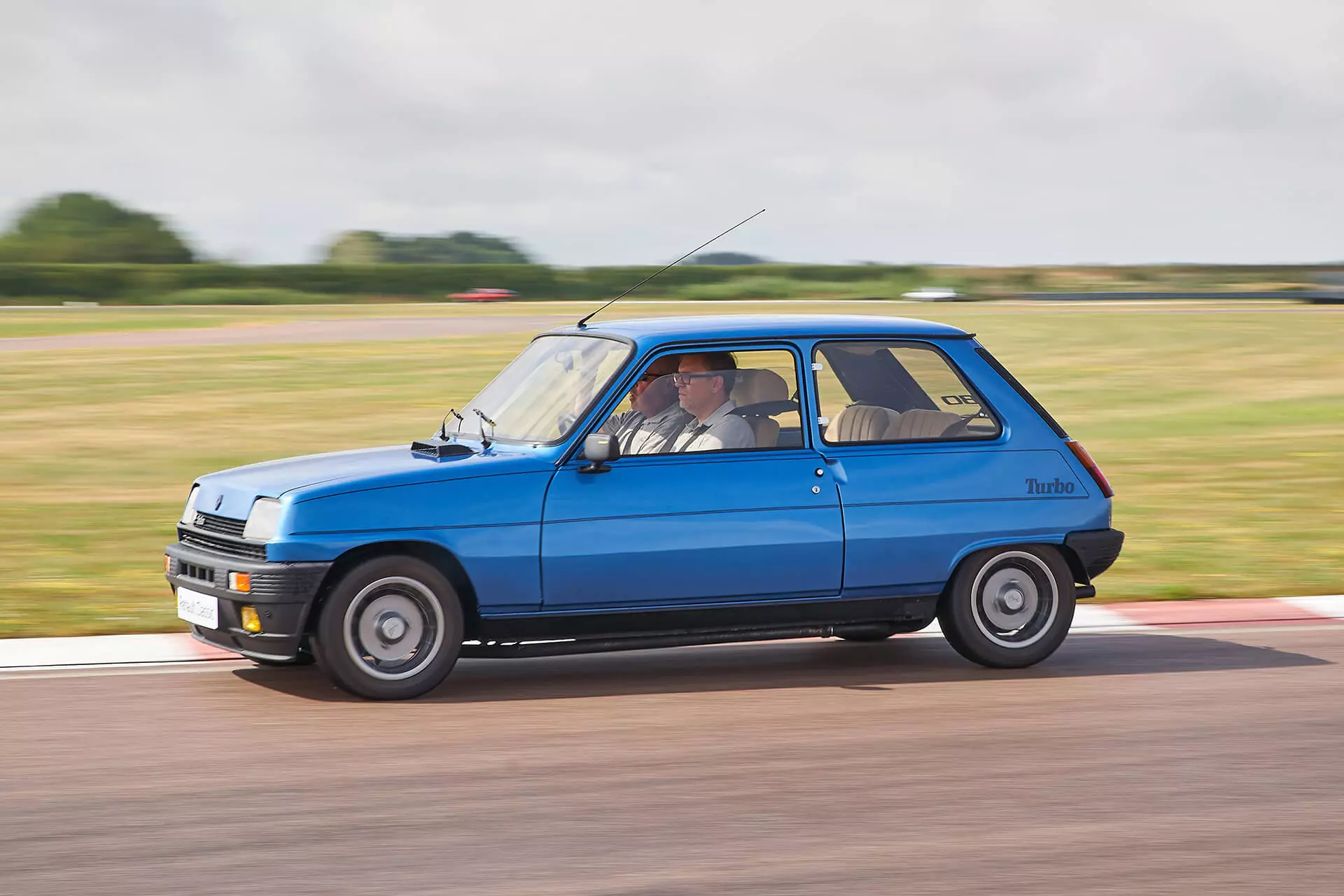
In yet another leap in time, it was then time to move to the commands of a Safrane Biturbo 1993 , with piloted suspension. The V6 PRV with two turbos reaches 286 hp, but what is impressive is the comfort, the ease of driving and the efficiency of both the engine and the chassis, both tuned by German preparers.
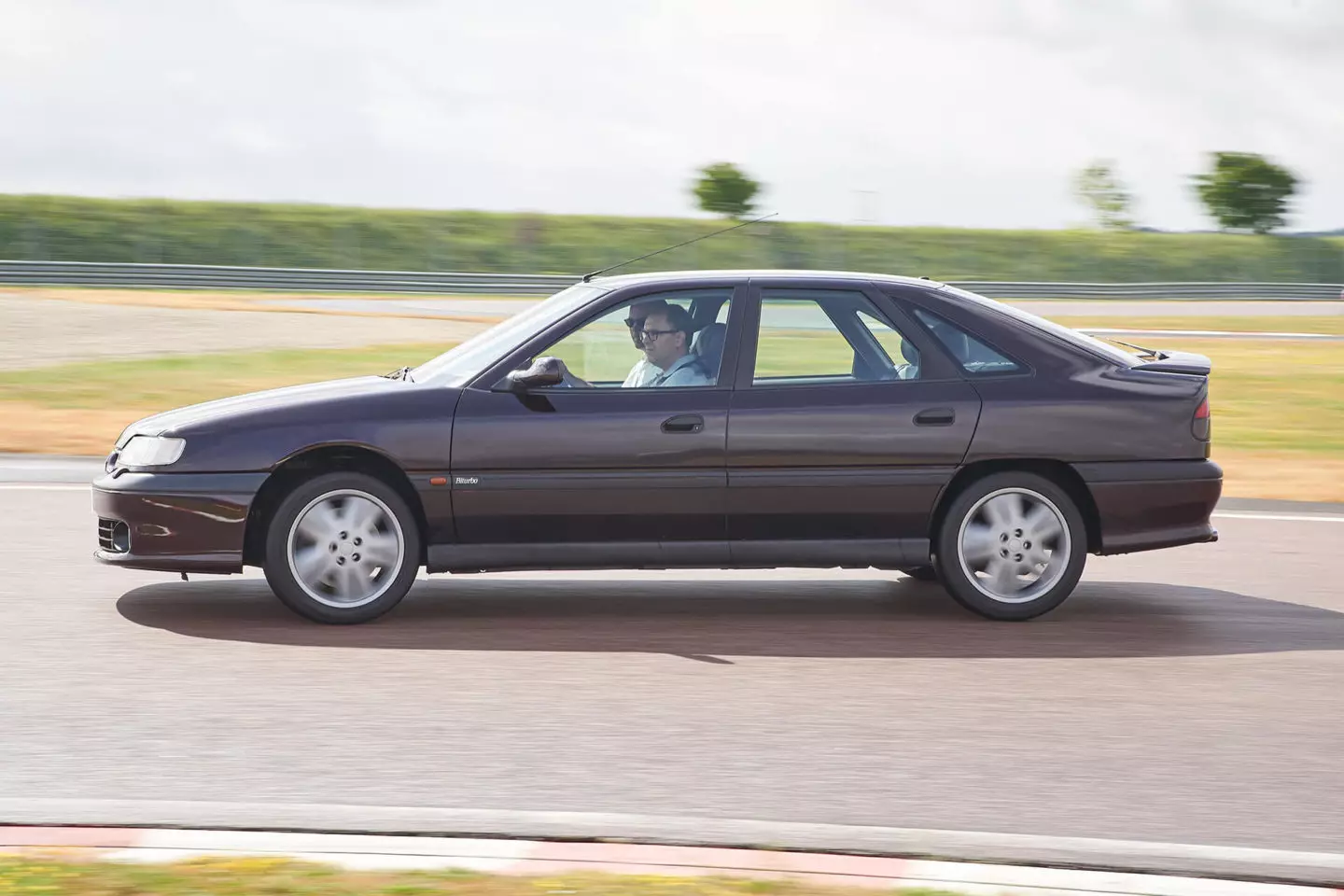
Renault Safrane Biturbo
At the wheel of the mythical R5 Turbo2
Of course we couldn't miss the opportunity to guide a R5 Turbo2 , a machine designed for rallies. The 1.4 Turbo engine is an evolution of the R5 Alpine Turbo, but here it produces 160 hp and is placed in a central position, in place of the rear seats. Of course the pull is behind.

Renault 5 Turbo2
The impressions that remain from this brief dynamic contact were of a driving position aligned with the steering wheel, but tall, with good steering but a delicate gearbox control. The front, very light, made blocking the front wheels when braking with little load on the front. It takes a strong slap to transfer mass forward. Afterwards, it's a matter of putting the front in a curve, without exaggeration, and quickly returning to the accelerator, dosing it to maintain the slightly oversteer attitude, but without exaggerating, so that the inner wheel doesn't lose traction. It's that the bodywork adorns more than it looks.
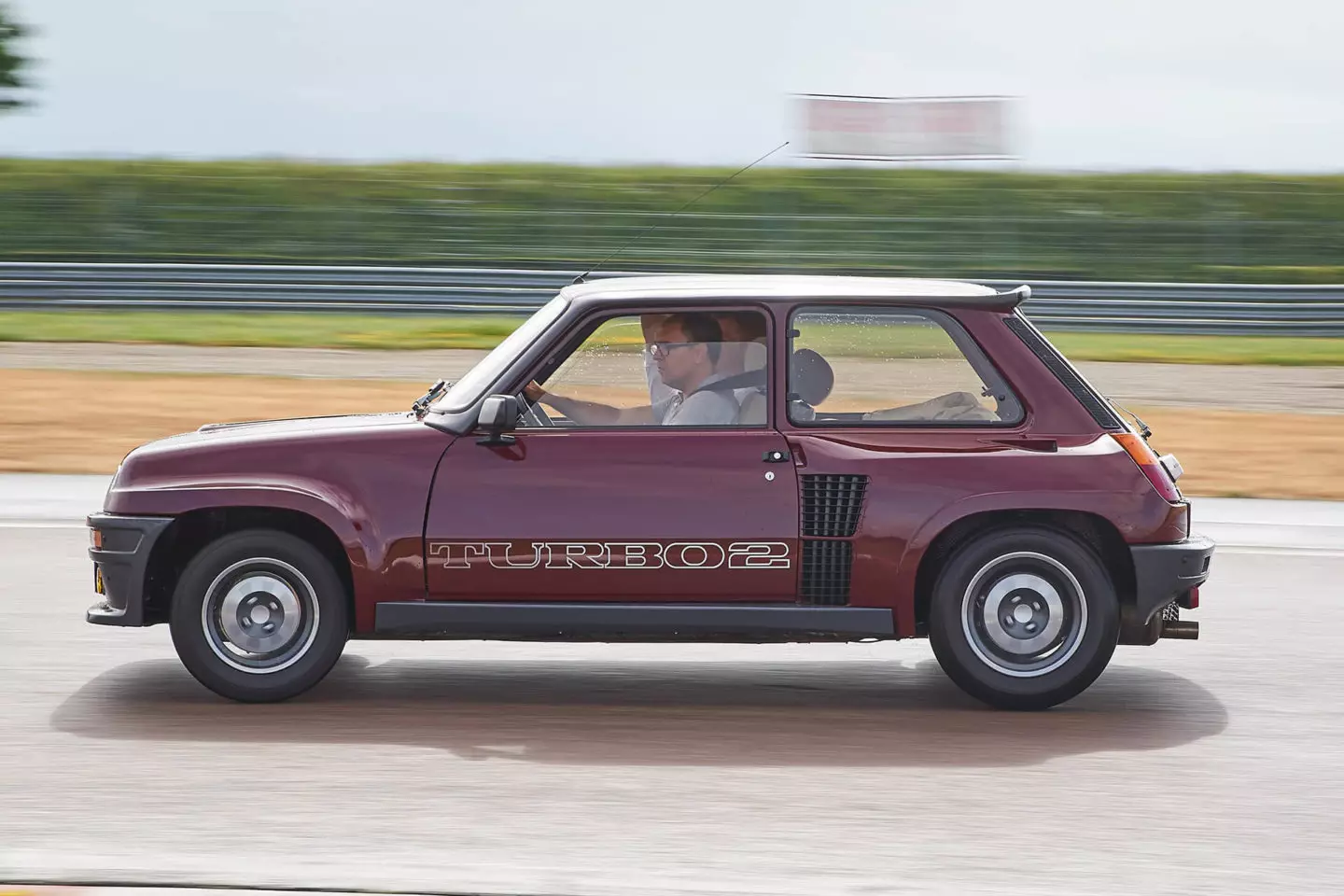
Renault 5 Turbo2
memories of the eighties
Towards the end was the one that will bring the most memories to those who remember what the second half of the eighties was: the R5 GT Turbo . A small sports car, which kept the 1.4 Turbo engine, with 115 hp and a very low maximum weight, in the order of 830 kg.
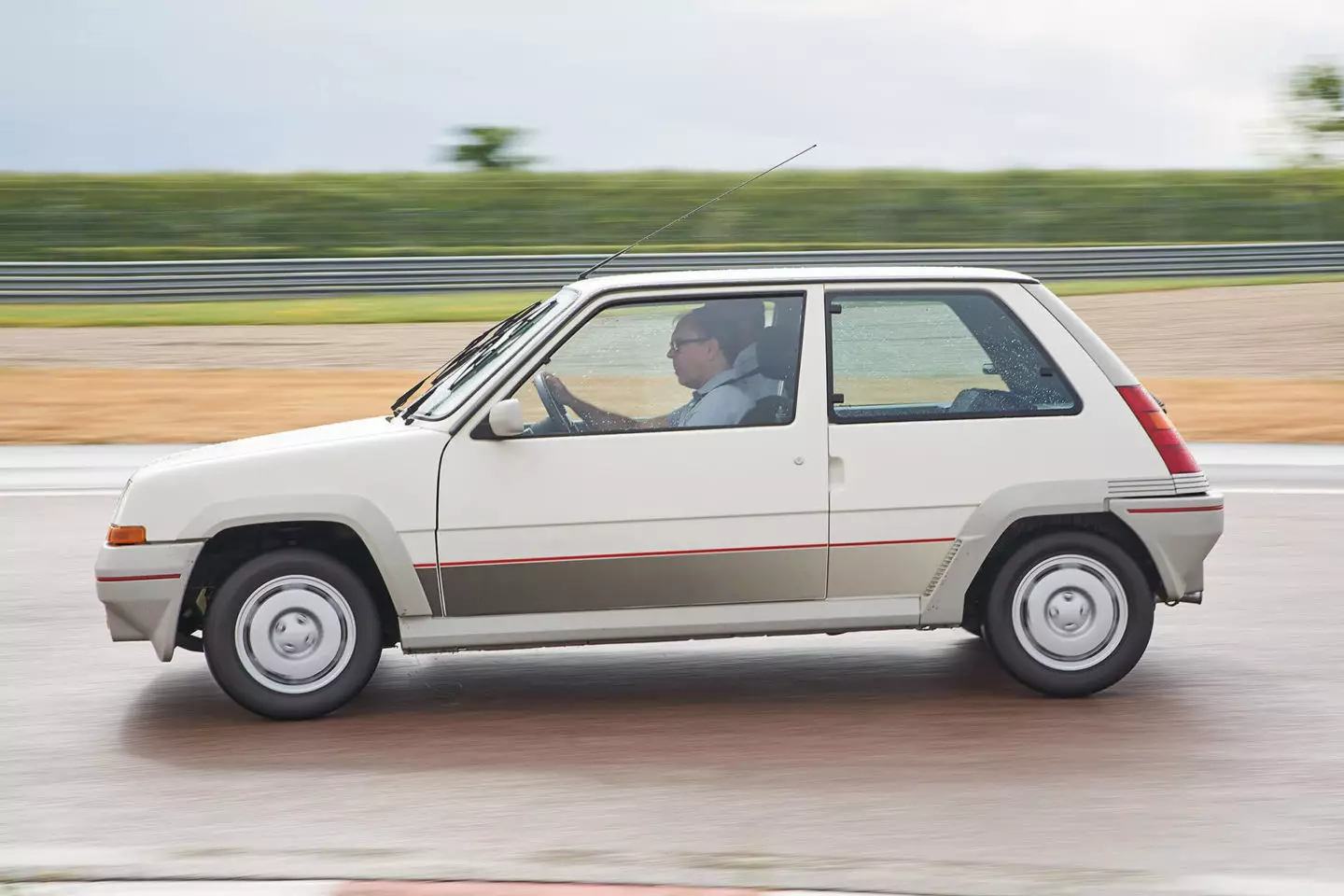
Renault 5 GT Turbo
The unit that Renault took to this event was only 1800 km long, providing an unexpected journey back in time. Someone said that “it still smelled new” which may be an exaggeration. But the truth is that in everything else, this 5 GT Turbo from 1985 was like new, with no gaps, “just fine”, as they say in the slang. A delight to drive on the track.
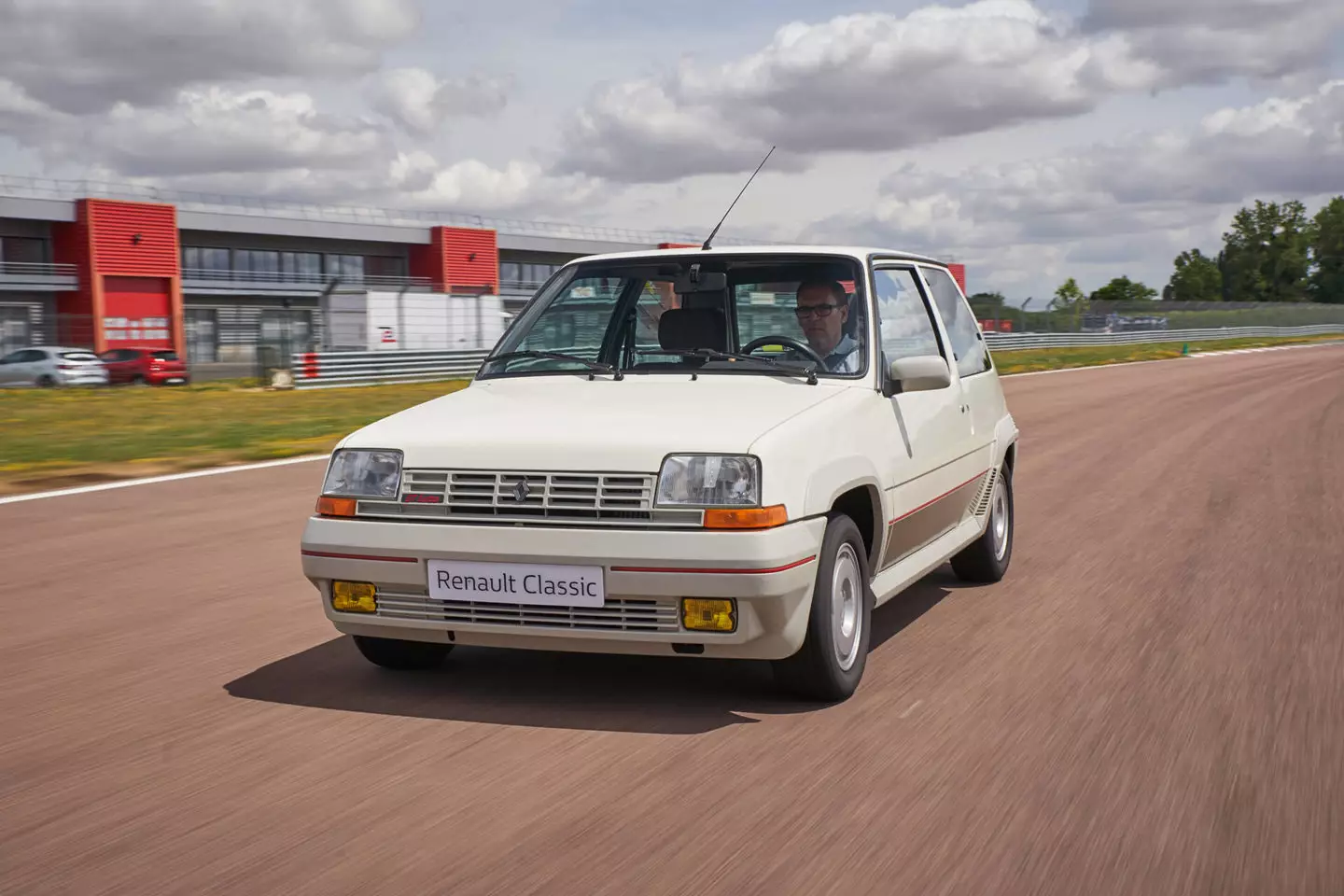
Renault 5 GT Turbo
The unassisted steering will be the main teller of the car's age, but only when it comes to maneuvers. On track it is always very precise and full of feedback, although it requires ample movement. The engine is capable of respectful performance, with the 0-100 km/h announced in 8.0s and the maximum speed of 201 km/h. It wasn't the day to get this straightened out, but some very quick laps of the circuit proved the relative progressivity of the engine above 3000 rpm and the great efficiency of the chassis, which curves in a very “flat” way, without much side-sloping cornering. , or longitudinal, under braking. Even the five-speed manual gearbox was quick and cooperative. Proof that low weight only has advantages.
Conclusion
If there is a brand that has made a technological transfer between Formula 1 and series cars, it is Renault with Turbo engines. A part of what its engineers learned on the track was later used to develop Turbo engines for road models. And in this celebration of 40 years of the first victory of an F1 Turbo, it was also clear that history continues.
A few quick laps behind the wheel of the new Mégane R.S. Trophy proved that.
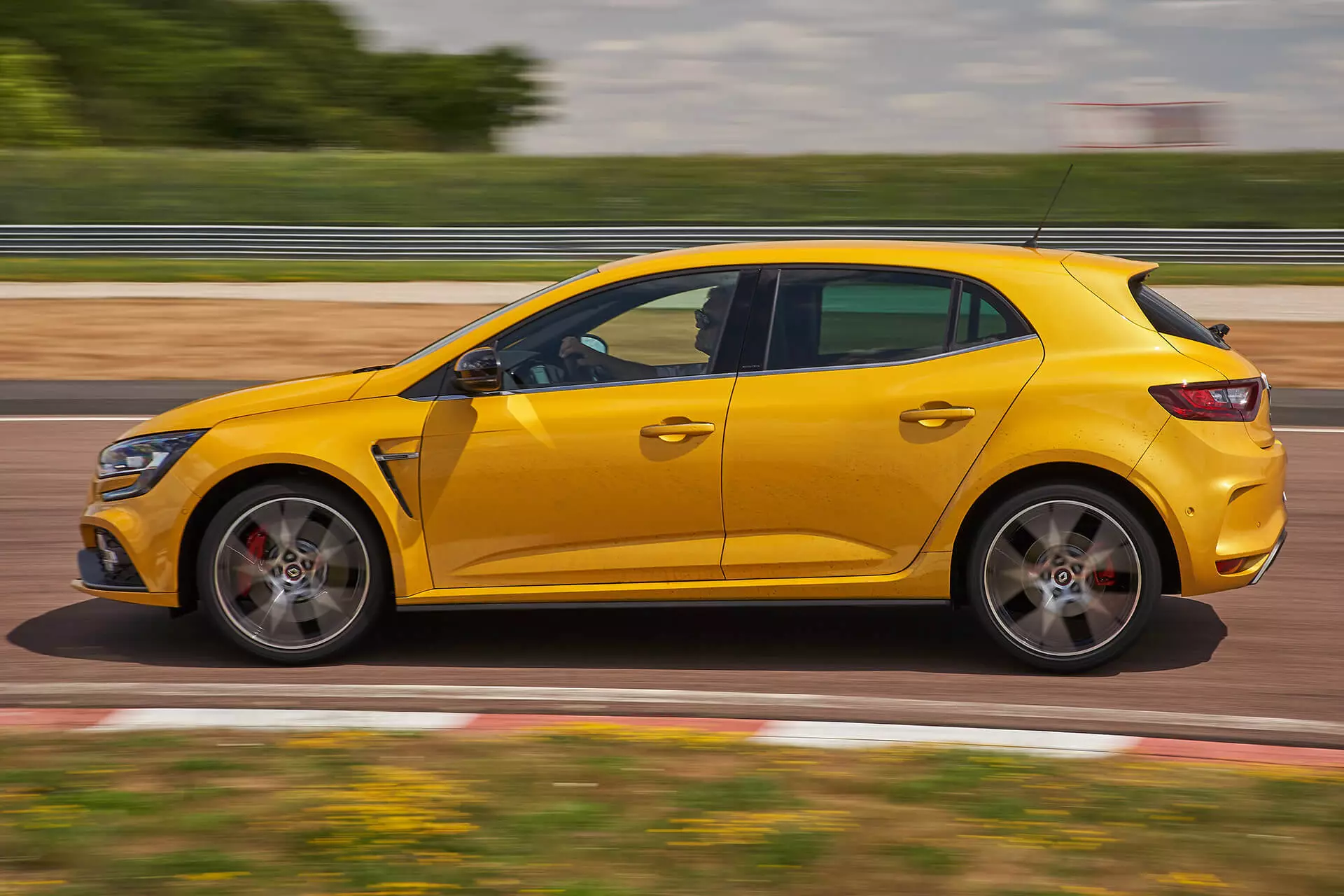
There was also a Trophy-R… but only for still pictures.
